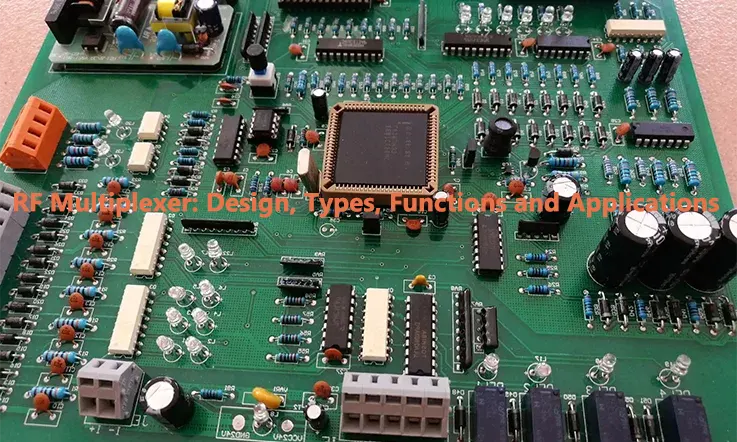
In the world of high speed communication systems and electronic gadgets RF multiplexers are essential for enhancing signal transmission and organization. As the need, for data transfer speeds, better network performance and improved communication features continues to grow RF multiplexers have become vital elements in a wide range of industries.
What is a RF Multiplexer ?
An RF multiplexer, brief for radio frequency multiplexer is a device that allows multiple radio frequency signals to be combined and transmitted over a single communication channel or antenna. This is achieved through careful switching amongst diverse input signals, subsequently directing them to the output channel.
RF multiplexers regularly find deployment in wireless communication systems, where numerous devices or signals vie for the same communication conduit. Case in point, within a cellular network, multiple users could be engaged in simultaneous data transmission and reception and this is when an RF multiplexer is leveraged to amalgamate all such data traffic, transmitting it over a unified channel.
RF multiplexers are also engineered to cater to divergent frequency bands, inclusive of VHF, UHF, or microwave frequencies, contingent on the particular application.
Types of RF Multiplexers
RF multiplexers Types: Analog RF Multiplexers and Digital RF Multiplexers. An Analog RF multiplexer may be sub-segmented into subtypes that include wavelength division multiplexing (WDM) and frequency division multiplexing (FDM). Countering this, Digital RF Multiplexers make effective use of time division multiplexing (TDM) for broadcasting signals. Such an orderly classification serves as an aid in deciphering the distinct functioning methods of the various RF multiplexing technologies as well as unfurls the prospective realms for their optimal deployment.
Pertaining to the range of RF multiplexer types meant for analog signal sources, the most frequently observed are the triplexer and quadplexer multiplexers. A triplexer multiplexer boasts one input along with three outputs, whilst a quadplexer multiplexer showcases one input and four outputs. These multiplexers receive categorization grounded on the tally of RF inputs and outputs they provision.
A Triplexer Multiplexer
An RF triplexer functions as a mechanism that amalgamates signals spanning across three separate frequency bands and subsequently partitions them. This equipment features a single input port linked with three output ports, with each port being tailored for a unique frequency range. Prevalently utilized within communication systems, this contrivance facilitates the transferral of diverse data forms – be it data, voice, or video – across three distinct frequency bands. Colloquially, the RF triplexer is often referred to as a 1×3 multiplexer.
A quadplexer multiplexer
An RF quadplexer is a device that consolidates signals from four distinct frequency bands and subsequently separates them for further processing. This functionality is similar to that of an RF triplexer, as both devices are intended for simultaneous transmission and processing of multiple frequency bands. The key distinction lies in the quadplexer’s ability to accommodate and handle four separate signal sources concurrently.
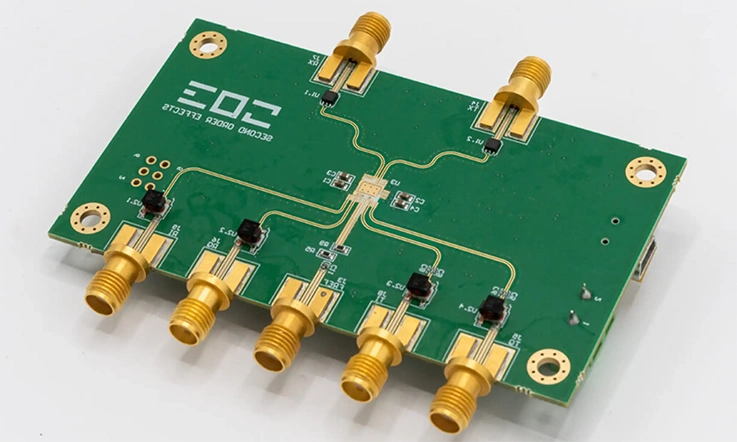
Apart from quadplexers and triplexers, the realm of RF multiplexers extends to incorporate variations such as RF pentaplexers, apt at unifying and disassociating signals derived from five disparate frequency bands. Additionally, RF hexaplexers are designed specifically to integrally bind and subsequently segregate signals traversing six individual frequency bands. These versatile categories of multiplexers provide enhanced potentiality for overseeing a heightened quantity of signal inputs.
Frequency Ranges of RF Multiplexers
RF Multiplexers are crafted to manage frequency bands tailored to suit the specific use case. The typical frequency ranges utilized for RF Multiplexers include:
Very High Frequency: In the realm of RF Multiplexers, VHF variants typically operate within the frequency range of 30 MHz to 300 MHz. Their applications are prominent in sectors like radio broadcasting, aviation communication, and marine telecommunication systems.
Ultra High Frequency: Alternatively, UHF RF Multiplexers are engineered to span a frequency spectrum of 300 MHz to 3 GHz. They serve as a crucial component in disparate sectors, incorporating mobile telecommunication, wireless LAN configurations, and satellite communication conduits.
Microwave Frequencies: Microwave RF Multiplexers are typically devised to cover the frequency spectrum of 3 GHz to 30 GHz or beyond. These are commonplace in applications such as radar networks, satellite communication platforms, and microwave linkage systems.
In the designing process of an RF Multiplexer, elements such as the transmission signal’s frequency range, the count of input channels, insertion loss, isolation, and switching speed require careful consideration. Selecting an RF Multiplexer aligned with the frequency range of the signals is quintessential so as to accomplish prime operational output and mitigate signal attrition.
Parameters to Consider in RF Multiplexer Design
When creating RF multiplexers it’s important to take into account essential factors:
Insertion Loss: Impedance mismatch and device losses contribute to insertion loss. Minimizing insertion loss is essential to enhance signal transmission efficiency and overall performance of the multiplexer.
Phase Balance: Each output interface of an RF multiplexer manifests disparate signal phases. The term phase balance is synonymous with the differential in signal phase across these interfaces. Upholding an optimal phase balance is crucial for the effective transmission of allocated and multiplexed signals.
Operational Frequency Range: The operational frequency span of the RF multiplexer is a pivotal parameter that merits consideration. It should correspond with the signal frequency spectrum pertaining to a specific application. Moreover, the central frequency and bandwidth values necessitate consideration for optimal functionality.
Count of Channels: The tally of output and input channels in the RF multiplexer delineates its capacity to allocate and multiplex signals. The intricacy of the overarching multiplexer design is directly affected by the count of channels leveraged.
Isolation: Isolation signifies the extent of signal separation between varying output or input ports of the multiplexer. Superior isolation culminates in diminished reciprocal interference amidst signals, thereby enhancing the overall performance.
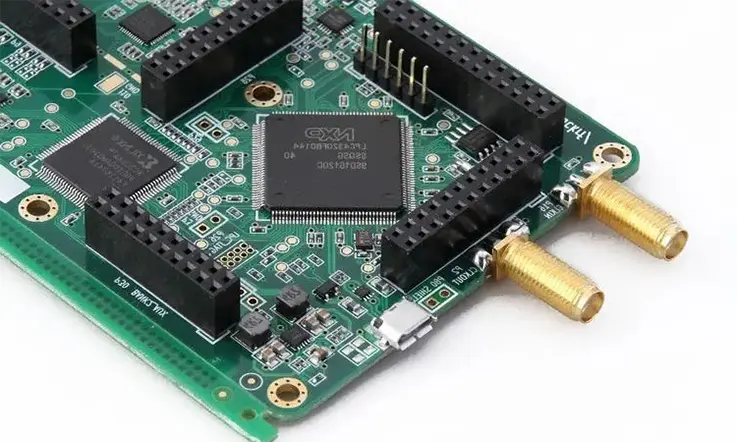
It’s pertinent to underscore that these parameters are relevant across an array of multiplexer types and should be evaluated in line with the operational frequency range.
How the RF Multiplexers Work ?
RF Multiplexers enable the combination and transmission of multiple signals through a single communication channel or antenna. These devices route the input signals to the output channel by employing a switching mechanism.
The basic operation of an RF Multiplexer encapsulates the selective affiliation of a single input signal to the output channel at any specific moment. The switching apparatus can be either passive or active, functioning at lofty frequencies to enable quick and uninterrupted switching.
Passive RF Multiplexers employ constituents such as filters and diodes for transitioning amid input signals. These passive components permit particular frequencies to traverse while obstructing others, thereby guaranteeing that the intended signal is routed to the output channel.
Active RF Multiplexers, on the contrary, employ active components like transistors and amplifiers to switch and amplify the signals. These active elements offer the capability to amplify weak signals and provide improved isolation between input channels. However, they consume more power and may introduce some noise into the system.
The architecture of an RF Multiplexer is contingent upon numerous elements including the range of the signal frequencies, the count of input channels, along with salient factors such as insertion loss, isolation, and switching velocity. RF Multiplexers are habitually employed in wireless communication structures, defense and aerospace industries, test and calibration setups, as well as in broadcasting landscapes.
Difference Between an RF Switch and RF Multiplexer
RF multiplexers and RF switches differ in several aspects. An RF switch is designed to toggle between different RF paths and is commonly used for tasks such as automatic signal routing, enabling/disabling RF signals, switching between transmission and reception (Tx/Rx), and wireless testing.
RF switches possess specific characteristics and specifications, including return loss, rise time, frequency range, isolation, insertion loss, and power handling capacity. They can be categorized into two main types based on their mechanical layout: drop-in and connectorized switches.
Conversely, RF multiplexers have the ability to converge multiple RF signals into a singular port or alternatively, bifurcate a signal from a singular port into multiple signals. With regards to dispatching RF signals, RF switches and RF multiplexers exhibit similar operational patterns. RF switches possessing a more substantial output setup, epitomized by 8×1 switches, are typically identified under the realm of RF multiplexers. On the other hand, RF switches exhibiting a lower output configuration are regularly classified as relays.
Applications of RF Multiplexers in Wireless Communication Systems
RF Multiplexers are components in wireless communication systems as they help combine multiple signals for sending over a single communication channel or antenna. The use of RF Multiplexers in communication systems is varied with various applications such as:
Cellular Networks: Within the ambit of cellular networks, RF Multiplexers play an integral role in uniting signals from various users onto a sole antenna. This allows several users to efficiently share a frequency band, thereby maximizing the deployment of radio spectrum resources.
Satellite Communication: Satellite communication systems bank on RF Multiplexers to amalgamate signals from various Earth stations prior to their transmission to satellites. Upon retransmission to Earth, an additional RF Multiplexer is employed to partition the signals for individual processing.
Wi-Fi Networks: The enlistment of RF Multiplexers in Wi-Fi networks promotes the blending of signals from differing access points. This provision assures continuous roaming capabilities and accelerates the overall network performance.
Radio Broadcasting: In the field of radio broadcasting RF Multiplexers are crucial, for combining audio signals to be transmitted on a single frequency band. This function allows multiple radio stations to broadcast on the frequency band globally expanding their reach to a wider audience.
Military Communication: RF Multiplexers embody quintessential components in military communication systems, where they are utilized to merge signals from a variety of sources such as ground stations, aircraft, and ships. By unifying these signals for transmission across a single channel, RF Multiplexers maximize the effective usage of finite radio spectrum resources and enhance communication capabilities within military maneuvers.
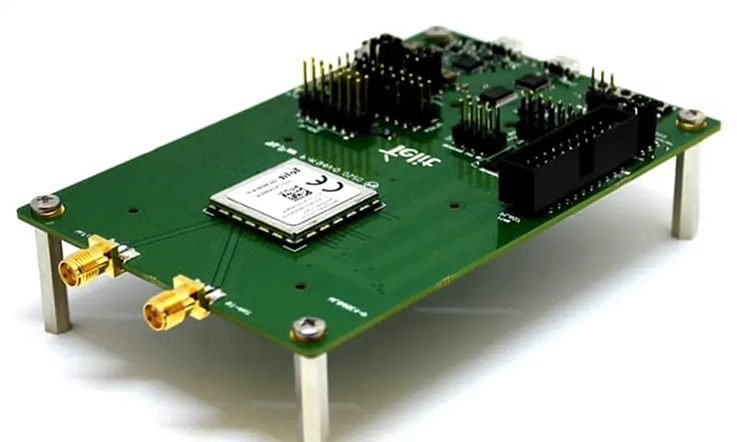
Considerations for Choosing an RF Multiplexer
In the selection process of an RF Multiplexer, meticulous evaluation of critical factors is imperative to guarantee optimal performance and functionality:
Number of Channels: The necessity for a specific number of input channels hinges on the distinct application. As a result, the choice of an RF Multiplexer capable of furnishing the needed number of channels is vital to ensure fluid and effective functioning.
Frequency Range: The importance of aligning the frequency range of employed signals with the designated frequency range of the RF Multiplexer cannot be overstated. This synchronization is a cornerstone in enhancing performance and concurrently curtailing signal degradation.
Insertion Loss: Insertion loss refers to the measure of signal loss that transpires during the transition process amongst input channels. It’s imperative to select an RF Multiplexer with a minimal insertion loss to maintain signal fidelity and overall quality.
Isolation: The ability of an RF Multiplexer to segregate input channels from each other, commonly known as isolation, is central in averting interference and crosstalk. Electing a model with superior isolation levels ensures signal purity.
Switching Speed: Switching speed pertains to the time taken by the RF Multiplexer to transition between input channels. Selecting an RF Multiplexer with rapid switching speed is vital to ensure seamless signal switching and mitigate signal loss.
Power Handling: Power handling denotes the maximum power capacity that the RF Multiplexer can effectively manage without risking damage. It is crucial to select an RF Multiplexer that aligns precisely with the requisite power levels dictated by the application at hand, thus preempting any potential operational complications.
How to Choose a Reliable a RF Multiplexer PCB Board Fabricator ?
Choosing a manufacturer for RF Multiplexer PCB boards is crucial, for guaranteeing the excellence and dependability of the end product. When assessing fabricators it’s essential to take into account the following aspects:
Experience and Reputation: Prioritize fabricators with a well-established reputation for delivering top-notch RF Multiplexer PCB boards. Research their background, explore client testimonials, and assess their online presence to gauge customer satisfaction levels.
Expertise in RF Design: Opt for a fabricator with specialized proficiency in RF design and manufacturing. Their understanding of RF Multiplexer PCB board intricacies, such as impedance matching and signal integrity, is crucial for meeting performance requirements.
Quality Control: Verify the fabricator’s adherence to stringent quality control protocols to uphold product excellence. Inquire about their testing methodologies and certifications like ISO 9001 or IPC-A-610 to ensure consistent quality standards.
Technology and Equipment: Select a fabricator equipped with cutting-edge technology and machinery to ensure precision and accuracy in manufacturing. Understanding their manufacturing processes and equipment capabilities is vital for meeting RF Multiplexer PCB board specifications.
Customer Service: Prioritize fabricators that offer superior customer service and support. Effective communication, responsiveness to queries, and regular progress updates are indicative of a fabricator committed to client satisfaction.
Cost: While the expenditure is certainly an element to consider, it shouldn’t undercut the essence of quality. so looking for a reliable PCB manufacturer that offers economical pricing range but doesn’t neglect the fundamental tenets of exceptional service and superior product quality.
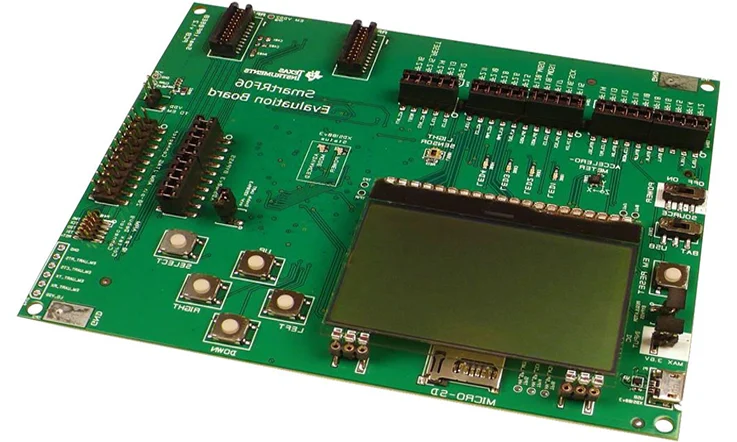
Why Choose Us ?
JarnisTech – Precise in Manufacturing RF Multiplexer PCB Products
In the realm of High-Frequency and High-Speed PCBs, adherence to fundamental principles is paramount for ensuring optimal functionality, particularly in the context of RF Multiplexer PCBs. At JarnisTech, we stand behind the operational success of your product with our specialized knowledge and extensive experience.
Our methodology encompasses precise calibration of PCB inner layer cutouts, stringent AOI (Automated Optical Inspection), and E-testing procedures. We have established a robust Quality Management System tailored for Surface Mount Technology (SMT), guaranteeing stringent quality control measures. Our adept team of professionals offers CAD support, leveraging their comprehensive expertise in the field. Furthermore, we maintain a strong emphasis on the proficient application of Microwave and RF technologies.
Recognizing the significance of selecting a proficient and seasoned PCB supplier, JarnisTech brings forth industry-specific experience in handling RF Multiplexer PCBs. Our longstanding presence in the industry sets us apart from newcomers, instilling a sense of trust and assurance.
Our proficiency extends to addressing diverse requirements commonly associated with RF Multiplexer PCBs, encompassing Aerospace PCBs, military-specification PCBs, and those utilized in advanced telecommunication systems. Throughout our tenure, we have adeptly fulfilled orders for Satellite PCBs, Voice over Internet Protocol (VoIP) systems, IoT PCBs, and related products.
At JarnisTech, we prioritize transparent communication with our clientele. Our approachable and accessible staff is available round-the-clock via chat, email, or phone, accommodating clients globally across various time zones. Our dedicated sales team is committed to guiding you seamlessly through the RF Multiplexer ordering process.
Rely on JarnisTech for the seamless production of your RF Multiplexer PCBs, underpinned by our wealth of experience, technical expertise, and unwavering dedication to customer satisfaction.
Conclusion
RF Multiplexers serve as integral components within diverse communication systems, facilitating the amalgamation and transmission of multiple signals through a single communication channel or antenna. Their utilization spans across various industries, including wireless communication systems, military and aerospace sectors, test and measurement applications, broadcast domains, and medical fields.
Selecting the RF Multiplexer involves evaluating various important aspects like the number of channels, frequency range, insertion loss, isolation, switching speed and power handling capacity. By analyzing these factors one can confirm that the chosen RF Multiplexer suits the particular needs of the application leading to improved performance and functionality.
Related Posts:
1.Guide to RF PCB Design and Microwave Material Selection
2.As a PCB Electronics Manufacturer: You Need to know Everything About RF Amplifier
4.Let Us Talk About HDMI PCB RF Modulator Detail
